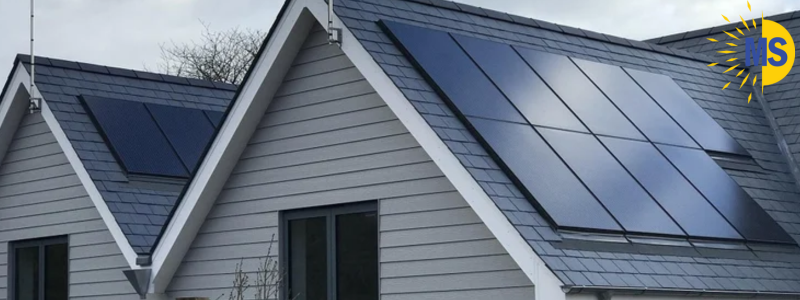The Complete Guide to Solar Installation in Texas
Are you a Texas homeowner considering switching to solar power but unsure where to start? You’re not alone. With sunny skies, high energy demands, and state-specific incentives, Texas is one of the best places in the United States to invest in solar energy. But making the switch isn’t as simple as plugging in a panel, it requires planning, permits, and understanding your options.
This blog is your complete guide to solar installation in Texas, covering everything from system costs and net metering to tax credits and the installation process. Whether you’re installing solar panels for environmental benefits or to reduce those rising electricity bills, this guide has you covered.
Why Go Solar in Texas?
Texas enjoys over 200 sunny days per year, making it a prime state for solar power. With the combination of federal tax incentives, local utility rebates, and the potential for net metering programs, installing solar panels has never been more cost-effective or environmentally impactful.
Did you know?
Texas is ranked 2nd in the U.S. for total installed solar capacity, and the numbers keep climbing.
What Does It Cost to Install Solar in Texas?
Average Solar Panel System Cost
As of 2025, the average cost to install a residential solar energy system in Texas ranges from $15,000 to $25,000 before incentives. Costs depend on factors like system size, roof type, and choice of equipment.
| System Size | Cost Before Incentives | Cost After 30% Tax Credit |
| 5 kW | $12,500 | $8,750 |
| 8 kW | $20,000 | $14,000 |
| 10 kW | $25,000 | $17,500 |
Federal & State Incentives for Texas Homeowners
The biggest incentive available is the Federal Investment Tax Credit (ITC), which allows you to deduct 30% of your solar installation cost from your federal taxes.
What Is Net Metering and How Does It Work in Texas?

Net metering lets you sell excess energy your solar system generates back to the grid. Texas doesn’t mandate net metering statewide, but many Retail Electric Providers (REPs) offer solar buyback plans.
There are three types of buyback programs:
- Uncapped Plans (e.g., Pulse Power): Credit you fully for all excess energy.
- Capped Plans: Credit only up to your home’s monthly usage.
- Real-Time Metering Plans: Credit based on hourly electricity market prices.
Always check the terms of solar buyback plans before choosing a utility provider.
Step-by-Step: Solar Installation Process in Texas
Here’s what the typical solar installation timeline looks like:
1. Site Assessment
A certified technician will evaluate your roof’s condition, sun exposure, tilt, and size. This comprehensive evaluation determines your property’s solar potential and identifies any structural modifications needed before installation. The assessment also includes shading analysis from nearby trees or buildings that could impact energy production throughout the year.
2. System Design & Permitting
The installer customizes your solar energy system based on your energy needs and local building codes. Professional engineers design the optimal panel layout, inverter placement, and electrical connections to maximize energy output. Your installer handles all permit applications with local authorities, ensuring compliance with Texas building regulations and utility interconnection requirements.
3. Incentive Applications
Your installer helps you apply for federal tax credits and local utility incentives. Texas homeowners can benefit from the 30% federal solar investment tax credit, plus various utility rebate programs. Many installers also assist with financing options, including solar loans and power purchase agreements that make installation more affordable.
4. Installation
Takes 1–3 days, depending on the system size. Professional installation teams mount panels, install inverters, run electrical conduit, and connect the monitoring system. Weather conditions and roof complexity can affect the timeline, but most residential installations complete quickly with minimal disruption to daily routines.
5. Inspection & Interconnection
A local inspector ensures the system complies with codes. After approval, it’s connected to the grid and you’re live! The utility company installs net metering equipment, allowing you to sell excess power back to the grid and receive credits on future electricity bills.
Choosing the Right Solar Installer in Texas
Selecting the right solar company is critical. Look for:
- Choose NABCEP-certified installers with Texas experience
- Verify proper insurance and licensing credentials
- Request detailed timeline and warranty information
- Understand maintenance requirements and monitoring capabilities
- Review net metering policies with your utility provider
- Customer reviews and BBB ratings
- Experience with Texas-specific utility programs
Compare quotes from at least 3 certified solar installers before making a decision.
How to Maximize Solar Panel Efficiency in Texas

Texas heat is great for solar, but extreme temperatures can impact panel performance. Follow these tips to get the most from your system:
1. Install South-Facing Panels
Ideal tilt: 25–30 degrees
2. Avoid Shade
Even small shaded areas can drastically reduce efficiency.
3. Choose High-Efficiency Panels
Monocrystalline panels are best suited for the hot Texas climate.
4. Maintain Your Panels
Clean panels 2–3 times a year and check for obstructions or debris.
Should You Add a Solar Battery?
Texas’ unpredictable weather makes solar battery storage an attractive option. While not essential, batteries allow you to:
- Store excess solar energy
- Use solar power during outages
- Maximize your energy independence
Cost: $10,000–$15,000
Federal Incentive: Battery costs are also eligible under the 30% ITC.
Consider pairing your solar system with a Tesla Powerwall or Enphase battery for complete energy freedom.
Will Solar Panels Increase My Home Value?
Yes! According to Zillow, homes with solar energy systems sell for 4% more on average. Solar adds long-term value, especially in Texas, where electricity costs can be high.
Bonus: Texas offers property tax exemptions for the added value solar brings to your home.
DIY vs. Professional Installation
While DIY solar kits exist, it’s best to hire a licensed installer to handle permitting, warranties, and system optimization. Improper installation can void your roof warranty or lead to code violations.
Common Questions About Solar in Texas
Is solar worth it in Texas?
Yes! Most homeowners see a payback period of 6–10 years and save $20,000–$30,000 over 25 years.
Can I install solar panels if I have a Homeowners Association (HOA)?
Yes. Texas Solar Access Laws prevent HOAs from unreasonably prohibiting solar installations.
Do solar panels work during blackouts?
Not unless you have a solar battery. Grid-tied systems shut off during outages for safety.
Summary
Installing solar panels in Texas is a smart financial investment, an environmentally conscious choice, and a step toward energy independence. With plenty of sunshine, robust local incentives, and flexible financing options, there’s never been a better time to make the switch.
Whether you’re just starting your solar journey or ready to get a quote, take the time to:
- Understand your electricity usage
- Choose the right installer
- Explore net metering and tax credits
- Consider long-term savings and ROI
Use an online solar calculator or get free quotes from trusted Texas solar installers to find out how much you could save today.
Maximum Solar Incentives Available Now!
- Call Now: 844-464-0003 (Free Solar Consultation)
- Email: info@mianrosolar.com
- Get Your FREE Solar Quote in 60 Seconds!
Join the solar revolution today, $0 upfront investment required! Your energy independence and financial freedom are just one phone call away. Contact Mianro Solar now and start saving from day one!

